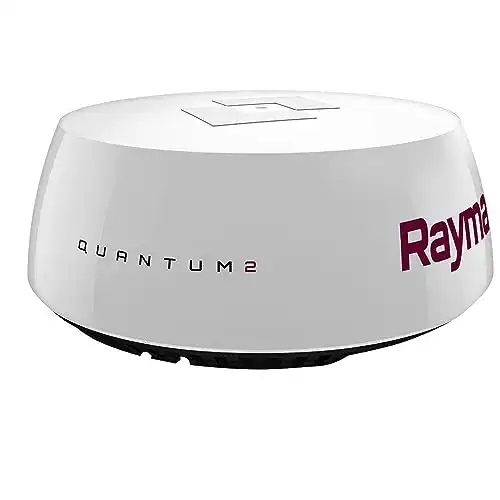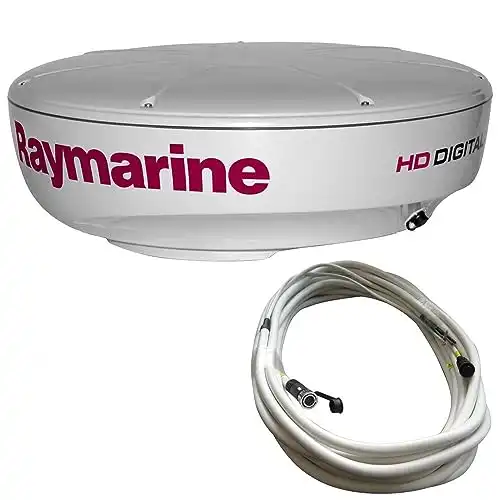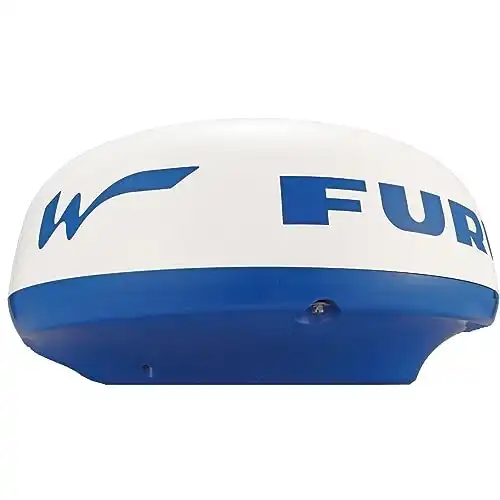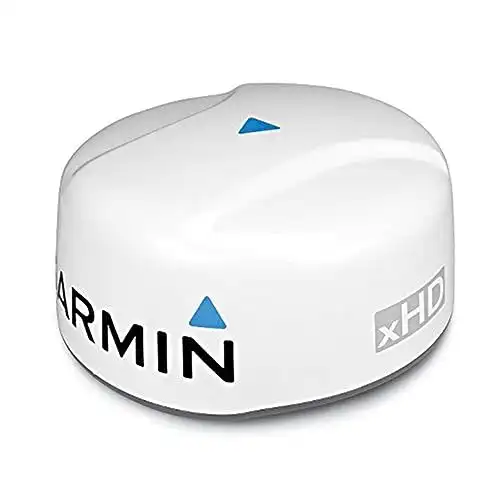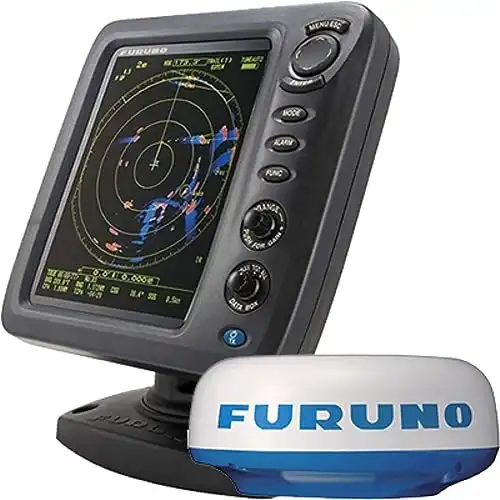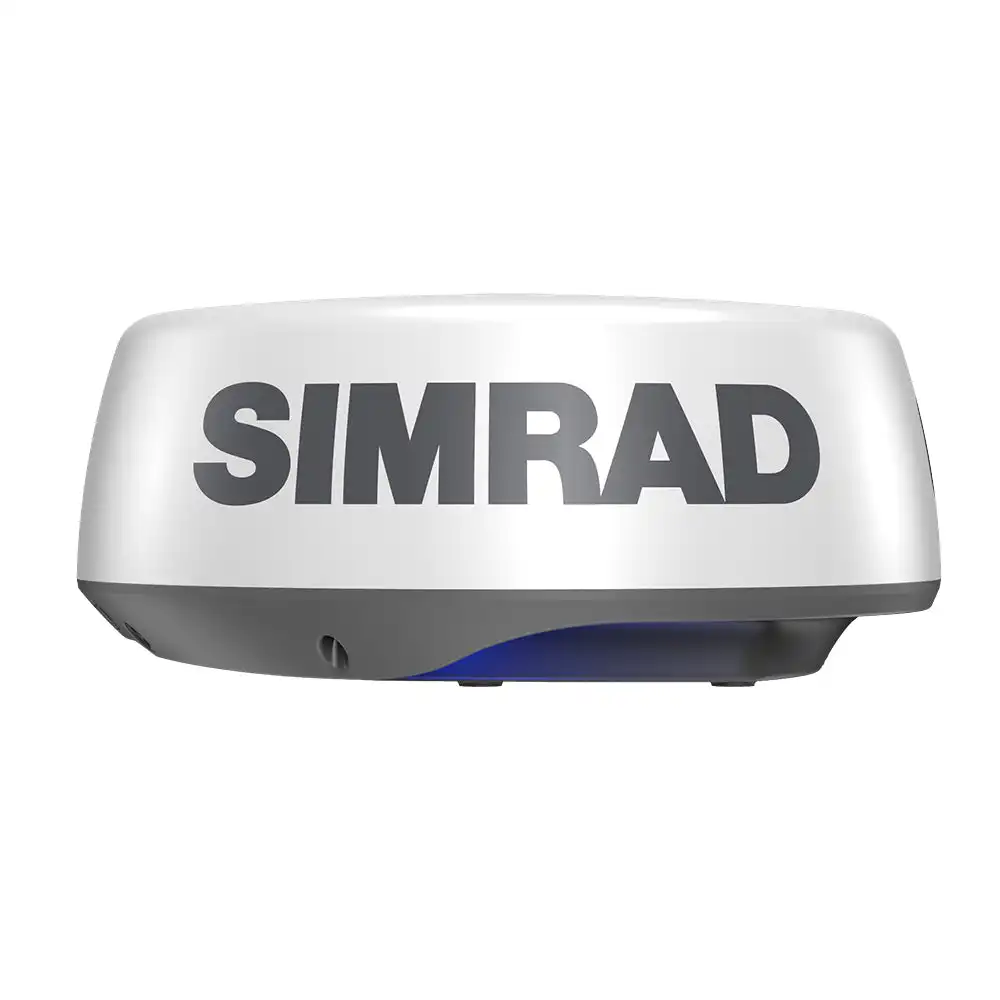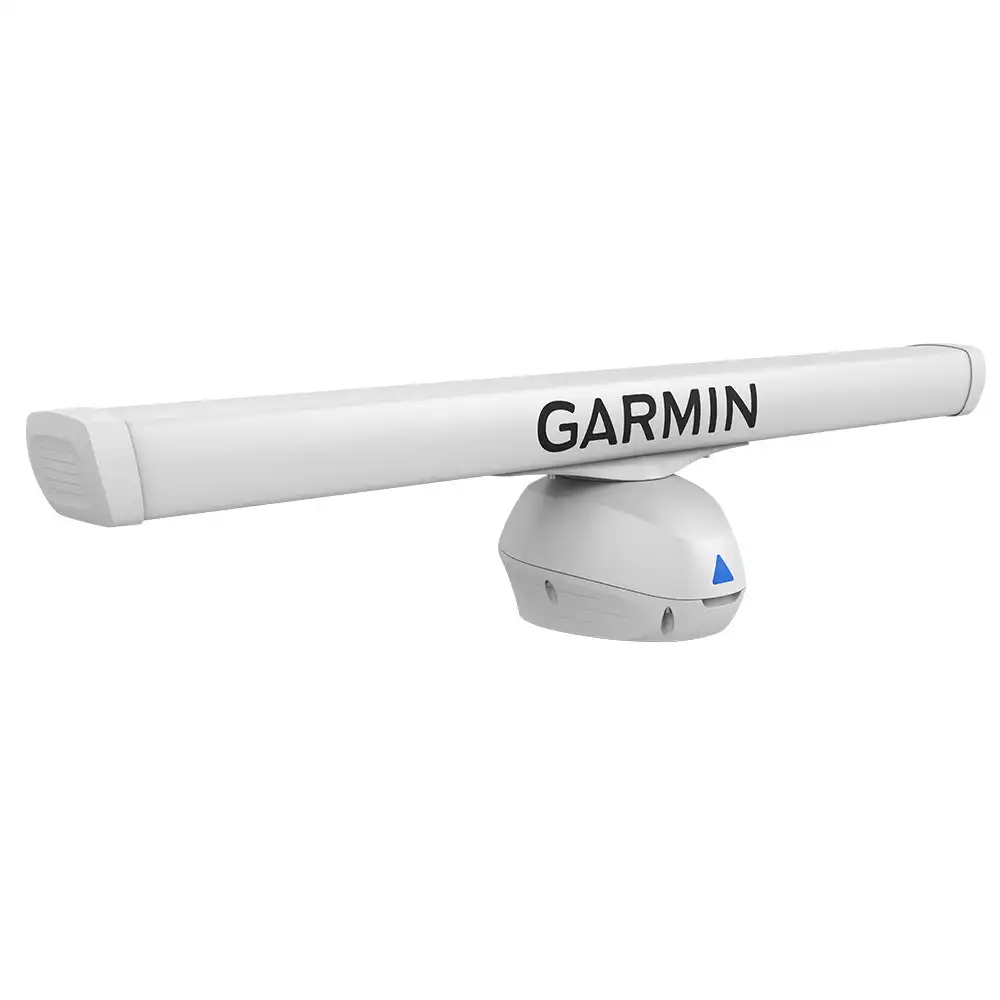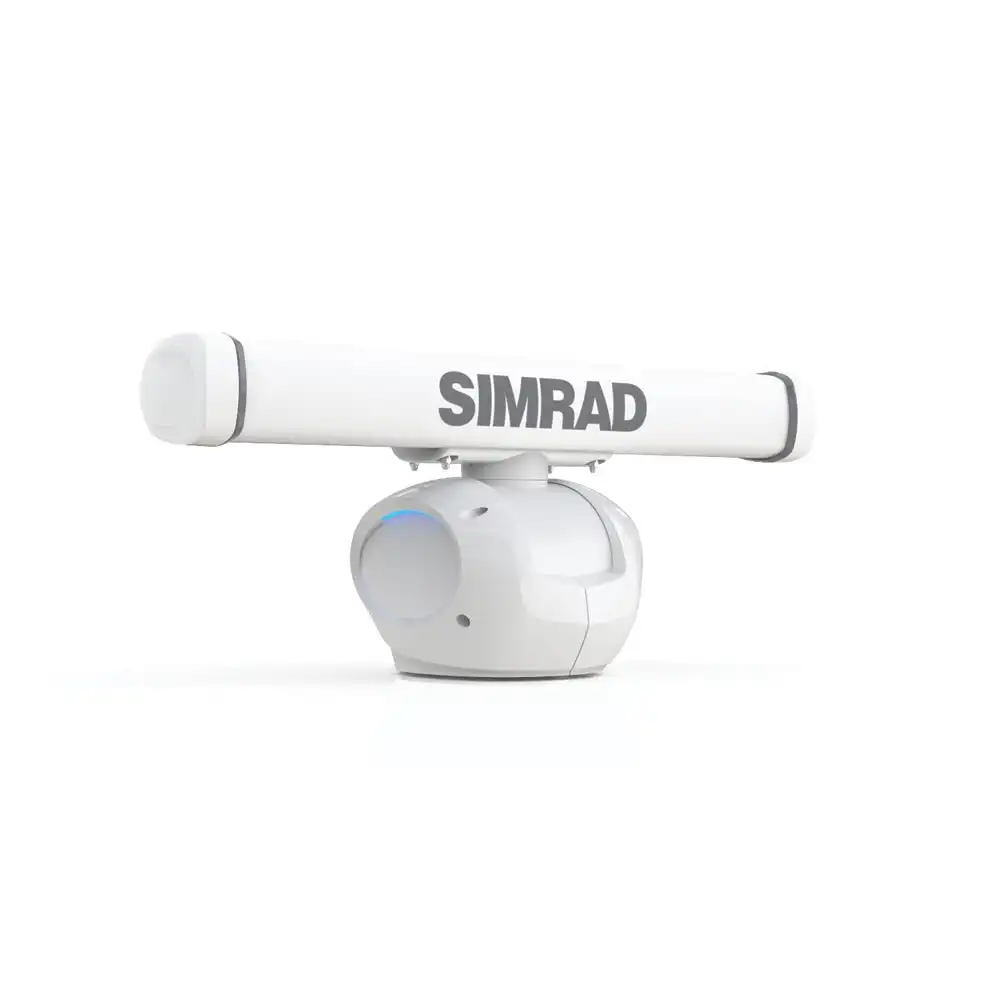Radar (radio detection and ranging) was one of the technological marvels of World War II. Like many emerging technologies, it arrived as a weapon. The thought of being able to see other objects in the dark, whether in the air, or on the water was like science fiction when radar was first introduced, but now, that amazing technology is available for private use on your fishing boat.
The usefulness of radar in avoiding obstacles like shorelines, rock outcroppings, and, most importantly, other boats is incredible. So was the price of private, commercially available radar. The yachts of the ultra-wealthy were the first to get radar, but when a private yacht is the size of a cruise ship or a navy destroyer, the price wasn’t an option.
In this review, we’ll look at the best marine radar on the consumer market. There are many options, designs, and manufacturers, and we’ll look at price, features, durability, warranty, and reputation along with other specifications on each of them.
Best Marine Radar – Closed Dome
| ||
| ||
| ||
| ||
| ||
|
Our Picks For The Best Open Array Radar
| ||
Marine Radar – a longer history than you might think
The big names of the early days of radio, electricity, and innovation are all tied to radar history. Heinrich Hertz, the man whose name is attached to nearly everything digital these days, as in kilohertz, megahertz, and gigahertz, dabbled in early experiments that eventually led to radar.
Guglielmo Marconi, is the man who first sent radio waves from Europe to America. Moreover, he is responsible for those ridiculous AM radio ads, (OK, maybe we shouldn’t blame the great Italian scientist for that) and also experimented with bouncing radio waves off metallic objects to determine their distance.
None of these experiments were really radar; they could detect the presence of a large ship a few miles out at sea but couldn’t determine the range, direction, or speed. It was just a spark that emitted a burst of static, telling you something was out there.
The first directional radar came about as war clouds descended on Europe in the late 1930s.
All the major industrial powers worked on developing radar, with the Germans and English taking the lead over the United States and Japan.
By the Battle of Britain in the summer of 1940, the English determined the speed, direction, and number of German Luftwaffe bombers approaching their island from bases in France.
As the war progressed, radar units became much smaller, able to be fitted on every warship and then onto merchant vessels. The miniaturization continued with bombers and large night fighter aircraft equipped with radar by the end of the war.
We wouldn’t think of getting onboard a commercial airliner without radar today. Commercial merchant ships, and charter fishing boats all have radar, and now, so can you on your cabin cruiser, sailboat, or even your bass boat.
Why Do You Need Radar on a Fishing Boat?
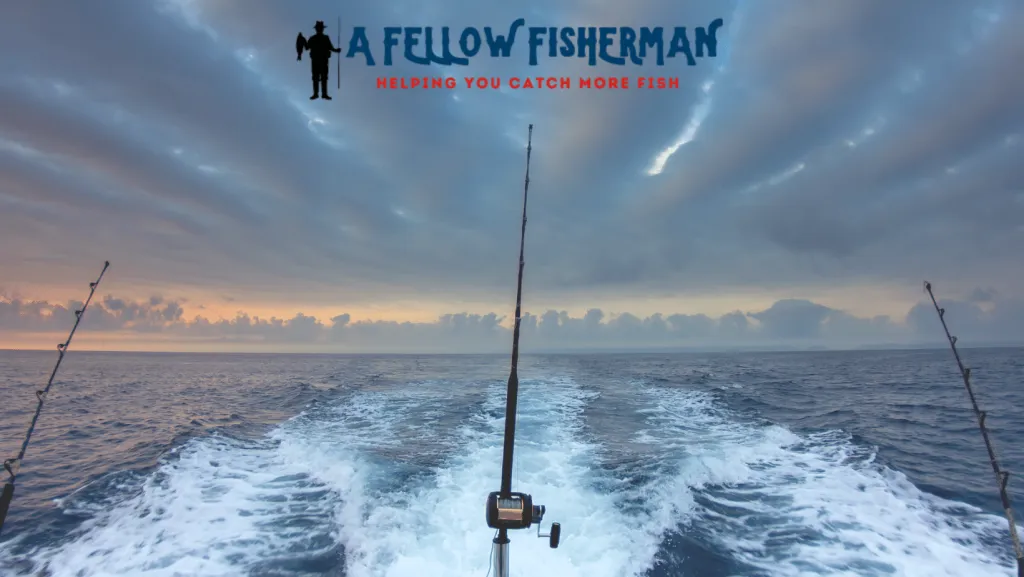
This is an often asked question, but the same people who ask it wouldn’t hesitate to have the latest, most technologically advanced fish finder on their boat. Fishfinders use a sister technology born of war to radar, sonar.
The cold, wet, icy sailors on the North Atlantic in World War II avoiding German U-boats would be amazed that this technology could now be placed on a tiny private fishing boat.
Radar has advantages for the angler, especially those that fish very popular lakes, bays, estuaries, and along coastal shipping routes.
Discovering an 800-foot-long tanker emerging from the fog trumps all that fun you just had to pull in halibut a couple of miles off the Oregon Coast. Even if it misses you, the ride in the wake of a big ship can be a life-altering (or ending) experience.
Some of the best fishing occurs on foggy days when a low-pressure system entices fish into feeding frenzies. Many prudent fishermen have long avoided those foggy days, fearing having their boat crushed by a larger vessel emerging from the fog.
With radar, that’s not a problem. The fog blocks your vision, but it does not affect the radar. You can spot all the surrounding ships, whether it’s foggy or in the blackest of night. Radar is another set of eyes working on a spectrum that our eyes cannot see.
What to Look For in a Marine Radar Unit
The first question is how are you going to use your radar? If you’re simply trying to avoid other boats in the fog, keep track of the shoreline, or help you back to the dock after dark, you’ll only need a very basic unit. This unit can do all the things described above. Moreover, many lower-priced radar sets can’t track multiple ships in real-time while generating distances from shore and avoiding collisions from both moving man-made objects and the natural barrier that nature has along the shoreline.
Along with what you plan to use your new radar for comes the question of how often are you going to use it. If it is for finding your way in foggy or dark, moonless conditions, you’re not going to put it to the test, you’re a basic user and not in need of advanced technologies. That should make your decision easier, and the strain on your bank account is easier.
The bank account connection leads to another consideration, how much money do you want to spend on a radar unit for your boat?
Prices have dropped a lot since personal radar was first introduced. You can purchase systems now with great functionality for just over a thousand dollars. With any technology, especially one designed to work in the trying conditions found on fresh and saltwater fishing adventures, the price goes up as the features increase. The old saying, “No bucks, no Buck Rogers” holds in almost every aspect of fishing but is especially pertinent to boat-mounted electronics like radar.
With price and functionality comes the question of where will you put this unit on your boat. Do you have enough room to carry a radar unit, is there a place for the antenna, the base, or a power source you can easily connect the unit to? These are considerations, that may not be as important if you have a 45-foot yacht, but are a factor on the 16 or 20-foot fishing boat, or 24-foot pontoon party barge.
The final question is a technological one. How many features do you need? Does the unit need to interface with the GPS on your fishfinder? Do you require it to work with the mapping software also available on high-end fish finders? Is this a standalone device or a multi-function system?
Radar is advanced technology on a fishing boat, and it requires advanced technological questions to be answered before you ever connect the positive and negative leads and take them out on the water.
With all these considerations in mind, let’s take a look at what’s out there on the market.
Best Marine Radar Reviews
Raymarine Quantum 2
This is the top-of-the-line in marine radar, and it comes at a top-of-the-line price. If you’re after the most advanced number of proven, high-performance features, don’t look any further in this review, this is the radar for you.
General Options
Doppler’s radar images move targets, creating real-time situational awareness of surrounding boats and structures. In other words, it’s like the control tower at a major airport; you have 360-degree coverage of everything on the surrounding water.
This marine radar unit features fully automatic MARPA (mini automatic radar plotting aid), which can track targets automatically as they appear. Moreover, you can set a target, and the system will keep track of that set target for you, a handy aid in returning to the dock in pitch-black darkness.
The ability to record the motion history using Raymarine’s adjustable TrueTails software.
CHIRP (compressed high-intensity radar pulse) allows the detection of extremely close objects at distances of less than 20 feet. It does this by transforming long-duration frequencies into narrow pulses with much higher amplitude. It takes a narrow high peak power pulse from long-duration pulses at low power.
A true “horizon to horizon” radar system with a 24-mile range, identical to the distance an object first appears over the horizon on the water as it emerges from the earth’s curvature. The 24-mile range works with traffic on the water, buoys, and landfall and can detect strong approaching weather fronts.
It has an immediate awareness system, meaning it starts instantly and is ready to go.
Inference protection eliminates noise and chatter from other radars in the area, allowing clear imaging on your device.
Setting up the radar can be done via a Wi-Fi connection on a phone, laptop, or tablet for easy installation.
The system can be easily upgraded both digitally and physically. All Raymarine scanners are built with the same bolt pattern so any new device can be placed in the location of an older model without drilling more holes in your boat.
It is a lightweight device at just under 12 pounds, with more features than competing models that can weigh twice as much.
The final attribute is a low power consumption rate, ensuring you’ll have clear imaging without draining your boat’s batteries in the process.
Specifics
The diameter of the circular radar housing is 21 inches and only eight inches high. As stated earlier it weighs about 12 pounds and can work on either 12 or 24volt DC power, with a power minimum of 10.8 volts and maximum input of 31.2 volts.
In transmit mode it draws a maximum of 17 watts, in standby seven watts, and when in sleep mode it draws just two watts.
Designed to operate in temperatures from 14 to 131 degrees, and in storage conditions ranging from -13 degrees to 158 degrees Fahrenheit. The upper-temperature limits are important, since it’s easy to hit 131 degrees in direct sunlight in summer conditions, and many storage sheds get extremely hot during the summer months.
The transmitter works from 9354 to 9446 MHz at a peak power output of 20 watts, with pulse widths of 40 ns to 14.7 us, and a chirp length of 400ns to 20us.
The antenna sweeps at 24 revolutions per minute with a 4.9-degree horizontal and 20-degree vertical sweep.
The Doppler radar is truly remarkable with the ability to track 25 objects simultaneously using either MARPA or ARPA targeting.
The final attribute is an important one to consider. The Quantum 2 is designed for sailboats, and smaller powerboats, but has the range, power, and features to operate on large charter boats and even larger yachts.
This is the Cadillac of personal, consumer marine radar.
Raymarine Color Radome
This simple plug and play technology, with a multi-level 256 color display offers top performance at a reasonable price.
Are you looking for a little more bang for the buck and interested in catching fish more than playing James Bond on the water to avoid fast-moving traffic? This might be the radar unit for you, especially if you’re on to the tricks that many experienced anglers already know when it comes to birds as guides to finding fish.
This unit has a range of 48 nautical miles, that’s double the horizon distance, but it makes sense if you’re targeting objects above the water as well as surface vessels and features near you.
This simple plug-and-play technology, with a multi-level 256 color display offers top performance at a reasonable price.
Weighing 21 pounds, it’s still light enough for almost every fishing or sailboat and operates on 4 kW of power.
The adaptive digital receiver delivers a clear picture of your surroundings regardless of the weather conditions.
The magic of this device for anglers is bird mode. In bird mode, it can detect a flock of birds at a long distance. That swarming cloud of seagulls or a flock of diving pelicans isn’t doing that for their own good or for exercise. These birds have located a school of fish and are feeding on them.
While seabirds prey on small baitfish, so do the larger fish beneath that you’re after. Big fish eat little fish, and we catch and eat the big ones, the apex predators. The predators above unmask the ones below and if you have a bird mode radar, you can join the fun.
Furuno Defender – Best Small Boat Radar
On the low end of the price scale, the Defender is a modestly priced unit that still delivers the basic features you’ll need in a marine radar.
The Defender is a modestly priced unit that still delivers the basic features you’ll need in a marine radar on the low end of the price scale. This is my top pick for the best radar for small boats because it is wireless, compact, and priced fairly.
Operating at 4kW it has a range of 24 nautical miles, once again scanning the horizon across a full 360 degrees.
The Defender utilizes DRS4W radar a technology that allows you to access the information generated from the radar dome on a personal iOS device. That means your cell phone or tablet is the viewing interface.
This innovative, wireless technology cuts down on costs by eliminating the need for a standalone display device.
Download the app, connect it to the Defender, and start receiving imaging data.
The waterproof unit is designed to withstand near hurricane-force winds up to 70 knots, not something you’d want to experience in your light watercraft or fishing boat. Moreover, as you are tossed like a cork on the surface of a raging sea, you can still get radar images, hopefully, of the Coast Guard rescue team approaching you.
The unit is designed to work from below-freezing to the hottest temperatures you can get in direct sunlight on the water.
This is a great device, at a great price for small boats, and sailboats, and in a budget-conscious setting where you can get solid performance at a reasonable price.
The Garmin GMR
The Garmin GMR 18HD+ is reasonably priced, and while it doesn’t have the features and functionality of a Quantum 2, it doesn’t have a huge price tag either.
Here is a name that is synonymous with finding out where you are. Garmin has established the best reputation in the GPS industry with its wide variety of devices, and they’ve also moved to the world of radar. Garmin makes outstanding fish finders using various sonar bands, and they’ve now moved above the water to help with radar imaging.
The Garmin GMR 18HD+ is reasonably priced, and while it doesn’t have the features and functionality of a Quantum 2, it doesn’t have a huge price tag.
The Garmin GMR delivers quality images by detecting objects on the water and a few degrees above 36 miles, or ones as close as 20 meters rolling in out of the fog.
A multifunction display with a MARPA track offers the chance to keep track of surrounding vessels even in the heaviest fog or the darkest moonless nights.
It’s compact, has a 4kW output, and works well day or night.
The Dynamic Sea Filter option adapts to changing conditions on the water, so you’ll always have a radar signal no matter what type of weather is rolling in.
Furuno 1815 Color LCD Marine Radar
Sometimes you just want the basic features of an electronic device devoid of all the bells and whistles generated by marketing groups that are trying to sell a product, rather than deliver a high quality one.
Sometimes you just want the basic features of an electronic device devoid of all the bells and whistles generated by marketing groups that are trying to sell a product, rather than deliver a high-quality one.
The Furuno 1815 is a simple, easy-to-use device that delivers basic radar performance. The 8.4-inch color LCD is a nice fit for small fishing boats, sailboats, or even water-skiing boats. It offers the insurance of detecting surrounding watercraft in limited visual conditions and can get you home, and back to the dock in pitch-black conditions as well.
The fast target tracking feature allows you to monitor 10 targets simultaneously. Obviously, it’s not as many as the 25 objects the Quantum 2 can track, but you’re not paying the Quantum 2 price either.
A range of 36 miles is more than adequate, and it has an option to compile data over time so you can track where an object has been in the past and where it is now.
A small footprint on the radome makes this a good choice for very small watercraft.
The Simrad Halo 20+ Marine Radar
The Halo 20+ has a bird mode, harbor mode, tracks weather, and locates other boats as they move around you. What more could you ask for in a personal radar device?
Radar works on a couple of basic premises, the first being the maximum range you can get with the least amount of power consumed, and the second is the scanning rate as measured by how fast the antenna rotates.
The Halo 20+ has one of the fastest rotations on the market at 60 revolutions per minute at ranges below 1.5 miles. What that means to you is that you’ll have a radar image every second in a cluttered fishing environment or in an area full of jet skies and water skiers. Scanning 360 degrees a second produces an image you couldn’t reproduce visually if you tried to look completely around you.
The Halo 20+ includes MARPA target tracking and has a Velocity Track Doppler feature that works well in collision avoidance. Doppler allows your device to determine the distance of an object and whether it is closing in or moving away from you. That’s a great tool for avoiding other boats that may not even realize you are in their path.
The Halo 20+ has a bird mode, and harbor mode, tracks weather, and locates other boats as they move around you.
What more could you ask for in a personal radar device?
Conclusion
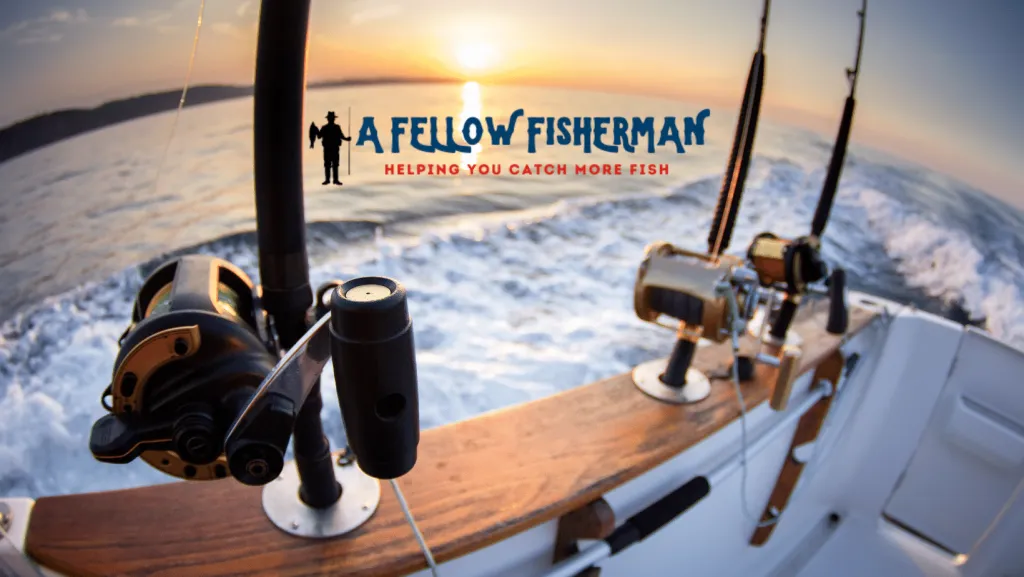
Radar offers many viewing and safety options that weren’t available to private fishing boats, sailboats, and pleasure craft just a generation ago.
Radar was only for the military, commercial shipping, and the yachts of the very wealthy. That is no longer true. Radar has become affordable for just about anyone who owns a boat.
Whether you’re fishing a crowded lake or reservoir, navigating a large, heavily traveled major river, or working in a bay, or offshore, radar delivers another level of security.
Getting lost on the water is a fear for many boaters, limiting them to line of sight from shore in their saltwater or even Great Lakes fishing adventures. Radar extends your vision and makes it possible to target moving objects on or above the water and stationary objects onshore.
A Doppler feature is a nice addition since it will let you know if another boat is on a collision course, moving at a tangent to you, or moving away.
The ability to scan the entire horizon is great for safety, but it’s even better if you’re a fisherman with a bird mode radar and want to find where the big fish are feeding by watching their hungry counterparts from the sky feed on the same baitfish.
You can spend upwards of $5000 or more on a high-end radar system or just a thousand or so on a basic unit that delivers radar’s most important features.
Using radar in conjunction with high-quality fish finders that utilize GPS, mapping software, and guided travel routes creates a high-tech situation that the greatest navies in history didn’t have until a few years ago.
You might not be the USS Enterprise, the Queen Mary, or some random yacht-owning millionaire. However, you can be safe on the water, locate others who aren’t that safe, avoid rocks, shoals, and buoys, and find your way home in the dark with quality marine radar.
For more guidance on choosing marine electronics, check out the pages below:

